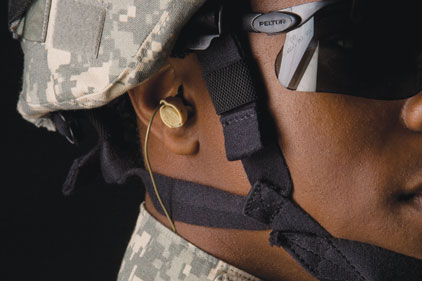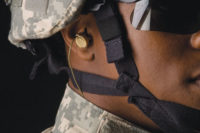Part I of this article explores program pitfalls and management issues that may be common to most hearing conservation programs with special attention to how checklists can facilitate teamwork, help manage the complexities and even help get the so-called “stupid stuff” right. Stratified checklists, designed for overall program management, will be introduced in a follow-up Part 2 article in ISHN’s December issue.
The checklist manifesto
Over 75 years ago, checklists were established in the aviation industry to deal with an aircraft (the B-17) that was thought to be “too much airplane for one person to fly.” In 2007, the medical profession caught up with this concept and showed, in a World Health Organization study, how a surgical checklist could dramatically cut death rates, infection rates and major complications.1
In a complex environment, checklists help us deal with two basic issues: “the fallibility of human memory and attention, especially when it comes to mundane routine matters that are easily overlooked under the strain of more pressing events. Faulty memory and distraction are a particular danger in what engineers call all-or-none processes. If you miss one key thing you might as well not have made the effort at all.”1
The key individual
Multi-disciplinary support for hearing conservation programs requires someone to coordinate the activities of each professional. Beyond that, someone in this professional matrix has to function as the program advocate. According to the Roysters, this “key individual” should have the communication skills to relate a strong passion for the program.2
The downside of a dependence on a “key individual” is what happens when they move on and are replaced by someone with less passion for the program. Communication breaks down. New management personnel are no longer briefed on the importance of supporting the program. Procedures that were once effective for helping to ensure that personnel receive all required hearing tests and are issued, fitted and trained with the appropriate hearing protection are no longer supported. Such a turnabout of program support could be a matter of other professional priorities, someone’s ego getting in the way of using a predecessor’s practices, or perhaps a lack of their documentation.
Another downside of an overdependence on the “key individual” is the increasing complexity and multitude of tasks that an effective hearing conservation program demands. There is an expectation in our culture that an individual with “expert audacity” (the “right stuff’) should be able to always get it right.1 There may be similar expectations for other personnel performing even the most mundane tasks.
A substantial knowledge base has been established over the last 30 years since the OSHA Noise Amendment was implemented. What works isn’t that much of a mystery anymore. Many of our programs have implemented what could be called best practices. So, why aren’t these best practices more widely implemented and why aren’t hearing conservation programs in general more effective?
The disarming simplicity of hearing conservation measures
Few would dispute that engineering noise controls involve a high level of expertise. Mismatched vibration isolators could set up a sympathetic reaction and bounce a machine off its mounts. Noise absorbing coefficients of sound insulation have to be matched to the spectrum of the noise. Noise treatment of duct work has to take into account required air flow. But what about other measures like testing hearing and issuing earplugs?
Despite microprocessor technology, we don’t test hearing directly in our hearing conservation programs. We depend on a behavioral response from someone who has been instructed to respond to varying levels of pure tones. The results of that hearing test are more of a matter of how well the instructions were provided, how motivated the individual is to respond, how precisely the audiometer is calibrated, how quiet the test environment and if technicians respond appropriately to error codes during the test.
The audiometer check and the biological calibration check before testing can pick up issues that can save time, money and increase the accuracy of audiometric test results. Although the need for these checks was established years ago, the wonders of microprocessor audiometry can lure us into a false sense of security that such checks are no longer needed. But, now like back then, earphones and connecting cables are still most vulnerable to abuse and disconnects. Diligent use of checklists before a day’s testing can help identify these potential problems. How consistently they are used is another question.
An underestimation of the issues in the use of earplugs could represent the greatest failure in hearing conservation programs. Someone should be explaining the occlusion effect — that their voice will sound more low-toned and other sounds inside their head will sound louder when the earplugs are inserted correctly. Those that report the ringing in their ears has just been made worse also have to be counseled as to what is going on or that could be the last time they insert earplugs correctly or at all.
The increased functionality of hearing protectors and their integration with radios have come with increased complexity for the user. Even a low cost, low tech, level dependent earplug that doesn’t require batteries or electronic connections has introduced new levels of complexity as to their issue, fitting, proper use and cleaning.
Earplugs for combat situations currently being issued in U.S. Army basic training are now available in three sizes with a rocker tab for changing protection modes for steady state and impulse noise (weapons fire). If holes designed to channel acoustic energy through a filter are clogged with ear wax or soap, the earplug will lose its level dependent functionality and the user will lose the situational awareness advantage of this mode.
Even if you have fitted hundreds of individuals with these earplugs for combat, you can be distracted for a moment or simply forget one important step in the fitting and issue process. A checklist could help remind you. Keep the checklist short and use the terminology of the profession.1 Teamwork is fostered when these checklists are developed with all players involved. Everyone participating in the process should have the same opportunity as a supervisor to speak up if a step is missed or compromised.1
Sample Checklist for Fitting Earplugs for Combat
1. Need for weapons fire and steady state noise protection modes
2. How to change hearing protection modes
3. Caveats for situational awareness and hearing protection
4. Inspection of ear canal and trial earplug
5. Occlusion effect and ear canal seal verification
6. Cleaning procedures
7. Reinforce instructions with wallet card
Checklist items trigger further explanations and actions. They don’t spell out everything. For example, in step 3 above, the fitter should note that the level dependent mode is not acoustically transparent and that there is some high frequency attenuation.
References
1. A. Gawande, “The Checklist Manifesto: How to Get Things Right,” Henry Holt and Company, New York, 2009.
2. J. D. Royster and L. H. Royster, “Hearing Conservation Programs: A Practical Guide to Success,” Lewis Publishers, Inc., Chelsea, Michigan, 1990.

